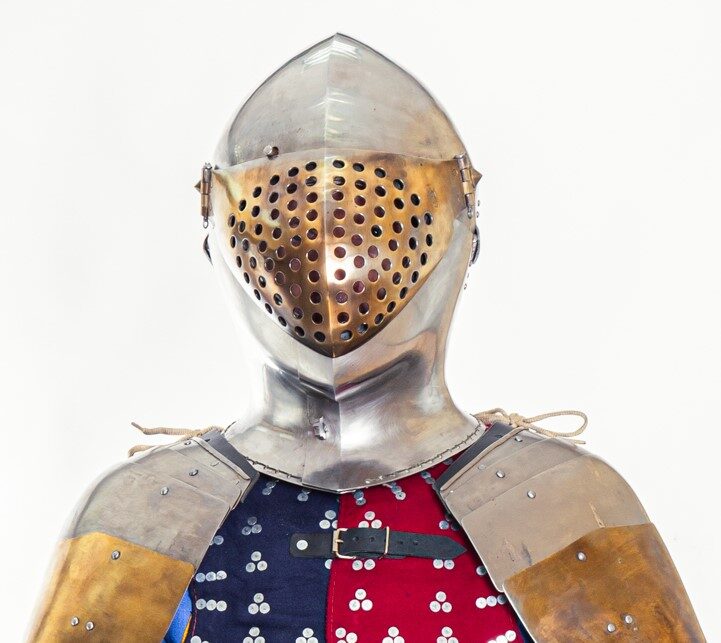The origin and history of the “chop suey” or “wonton” font is greatly misunderstood. This video explains the true history of the chop suey font, correcting mistakes in a video by graphic designer Linus Boman.
Brown, Miranda. “The Hidden, Magnificent History of Chop Suey.” Atlas Obscura, 30 November 2021. http://www.atlasobscura.com/articles/chop-suey-history.
Campbell, Mel. “Students’ Handwriting Remains the Mark of Learning.” The Sydney Morning Herald, 31 October 2014. https://www.smh.com.au/entertainment/students-handwriting-remains-the-mark-of-learning-20141028-11cvpf.html.
Chinese calligrapher- 六和书道 LiuHeShuDao.com. “Cursive Script (Chinese Calligraphic Style) 草书(高 ) 第1集 #1.” YouTube, 8 December 2017. https://www.youtube.com/watch?v=vcc5IX3EEGg.
Chu, Petra ten-Doesschate, and Jennifer Milam. Beyond Chinoiserie: Artistic Exchange between China and the West during the Late Qing Dynasty (1796-1911). BRILL, 2018.
Coe, Andrew. Chop Suey: A Cultural History of Chinese Food in the United States. Oxford University Press, USA, 2009.
Edson, Raina Swanson. “Can a Font Be Racist?” Music 345: Race, Identity, and Representation in American Music, 26 October 2021. https://pages.stolaf.edu/americanmusic/2021/10/25/can-a-font-be-racist/.
Ellison, Chappell. “Red Scare: How ‘Chop Suey’ Fonts Sell an Exotic, Fictional China How ‘Chop Suey’ Fonts Sell an Exotic, Fictional China.” GOOD, 17 February 2012. https://www.good.is/articles/how-chop-suey-fonts-sell-a-fictional-china.
Fahlstedt, Kim K. Chinatown Film Culture: The Appearance of Cinema in San Francisco’s Chinese Neighborhood. Rutgers University Press, 2020.
Fernández, Nichole. “StereoTYPES.” It Ain’t Necessarily So, 19 November 2015. http://www.itaintnecessarilyso.org/articles/2015/11/17/stereotypes.
Frölich, Hajo. “The Chinese Character: Handwriting between Utility and Identity in Twentieth-Century China.” Paedagogica Historica 55.6 (2019): 854–70. https://doi.org/10.1080/00309230.2019.1653946.
Godoy, Maria. “Lo Mein Loophole: How U.S. Immigration Law Fueled A Chinese Restaurant Boom.” NPR, 22 February 2016, § Food History & Culture. https://www.npr.org/sections/thesalt/2016/02/22/467113401/lo-mein-loophole-how-u-s-immigration-law-fueled-a-chinese-restaurant-boom.
Hyndman, Sarah. Why Fonts Matter. Berkeley, CA: Gingko Press, 2019.
Jaworski, Adam. “Multimodal Writing: The Avant-Garde Assemblage and Other Minimal Texts.” International Journal of Multilingualism 17.3 (2020): 336–60. https://doi.org/10.1080/14790718.2020.1766050.
Jiang, Yi. Signs in Urban Spaces in Ethnic Enclaves: A Case Study of Manhattan Chinatown. New York, N.Y.? publisher not identified, 2018. https://doi.org/10.7916/D8MD0GH8.
Jin, Xiaoxing. “The Evolution of Evolutionism in China, 1870–1930.” Isis 111.1 (2020): 46–66. https://doi.org/10.1086/708367.
Jung, John. “A Chinese American Historian By Chance: Chop Suey…the Font, Is It Racist?” A Chinese American Historian By Chance, 11 November 2020. https://chineseamericanhistorian.blogspot.com/2020/11/chop-sueythe-font-is-it-racist.html.
Lee, Jennifer B. The Fortune Cookie Chronicles: Adventures in the World of Chinese Food. Hachette UK, 2008.
Li, Chris Wen-Chao. “Conflicting Notions of Language Purity: The Interplay of Archaising, Ethnographic, Reformist, Elitist and Xenophobic Purism in the Perception of Standard Chinese.” Language & Communication 24 (2004): 97–133. https://doi.org/10.1016/j.langcom.2003.09.002.
Linus Boman. “How This Font Became the Face of Chinese Food in America,” 2 February 2022. https://www.youtube.com/watch?v=YP9gEeVQZ2U.
Look, Tin Eli (陸潤卿). “Our New Oriental City – Veritable Fairy Palaces Filled with the Choicest Treasures of the Orient.” San Francisco: The Metropolis of the West. Edited by Hamilton Wright. San Francisco: Western Press Association, 1910. https://archive.org/details/sanfranciscometr00wrig.
Lord, Victoria. “The Medieval Scribe and the Art of Writing.” The Ultimate History Project, n.d. http://ultimatehistoryproject.com/the-medieval-scribe.html.
Meletis, Dimitrios. “‘Is Your Font Racist?’ Metapragmatic Online Discourses on the Use of Typographic Mimicry and Its Appropriateness.” Social Semiotics 0.0 (2021): 1–23. https://doi.org/10.1080/10350330.2021.1989296.
Pan, Xiaxing, Huiyuan Jin, and Haitao Liu. “Motives for Chinese Script Simplification.” Language Problems and Language Planning 39.1 (2015): 1–32. https://doi.org/10.1075/lplp.39.1.01pan.
Pattanaik, Devdutt. “Love in Simplified Chinese Is without a Heart.” The Economic Times, 21 October 2019. https://economictimes.indiatimes.com/blogs/et-commentary/love-in-simplified-chinese-is-without-a-heart/.
Rainis, Jake. “Learning Blackletter Alphabets (Free Downloadable Guides).” Jake Rainis, 10 December 2019. https://jakerainis.com/blog/learning-blackletter-alphabets/.
Reed, Christopher, Félix Régamey, Pierre Loti, and Emile Guimet. The Chrysanthème Papers: The Pink Notebook of Madame Chrysanthème and Other Documents of French Japonisme. Honolulu: University of Hawaiʻi Press, 2010. https://www.degruyter.com/doi/book/10.21313/9780824860721.
Shaw, Paul. “Stereo Types.” PRINT Magazine, 17 June 2009. https://www.printmag.com/design-resources/stereo_types/.
Silverstein, Andrew. “In the Rarified World of Jewish Letters, a Mind-Boggling Font of Jewish History.” The Forward, 22 July 2022. https://forward.com/culture/507668/faux-hebrew-font-jewish-antisemitic-soy-vey-origins-fake-yiddish-letters/.
Takagi, Mariko. “Bamboo_fonts: Cultural Sstereotypes Visualised by Display Fonts.” Display Typography. Guwahati, India: Institute of Technology Guwahati, 2013.
———. “Kanji Graphy: Visual Translation between Latin Letters and Japanese Characters.” LetterSeed 11 (2015).
Travis. “Ranji: The World of Images on Export Tea Crates (Verkehr Museum, Shizuoka).” 上り口説 Nubui Kuduchi, 8 August 2020. https://chaari.wordpress.com/2020/08/07/ranji-the-world-of-images-on-export-tea-crates-verkehr-museum-shizuoka/.
Tsu, Jing. “Chinese Scripts, Codes, and Typewriting Machines.” Science and Technology in Modern China, 1880s-1940s. Edited by Jing Tsu and Benjamin A. Elman. China Studies 27. BRILL, 2014.
TypeRoom. “Can a Font, in Itself, Truly Be Racist? CNN & More Report on ‘Chop Suey’ Fonts – TypeRoom,” 7 October 2022. https://www.typeroom.eu/can-a-font-in-itself-truly-be-racist-cnn-and-more-report-on-chop-suey-fonts.
Wachendorff, Irmi. “Cultural Stereotypes In Letter Forms In Public Space.” NERD – New Experimental Research in Design. Edited by Michael Erlhoff and Wolfgang Jonas. De Gruyter, 2018. https://doi.org/10.1515/9783035617429, https://www.degruyter.com/document/doi/10.1515/9783035617429/html.
Waller, James. Prejudice Across America. University Press of Mississippi, 2009.
West, Andrew. “BabelStone Blog : R Rotunda Part 1.” BabelStone, July 2006. https://www.babelstone.co.uk/Blog/2006/07/r-rotunda-part-1.html.
Yung, Judy. San Francisco’s Chinatown. Arcadia Publishing, 2006.
“Carolingian Minuscule.” Arts and Justice, 5 February 2016. https://www.artsandjustice.org/graphic-design-1/carolingian-minuscule-5012/.
Cord Cursive Handwriting: Notes for Teachers. Tasmania, Australia: Education Department, Curriculum Branch, 1969.
“Handwriting,” n.d. http://what-when-how.com/forensic-sciences/handwriting/.
[Memorizing Characters] The Most Common Chinese Radicals Explained in English | 女字旁, 2019.
“Raven Mo,” n.d. https://www.ravenmo.info/.
“Rocky Mountain Branch of the IDA – Promoting Structured Literacy Through Research, Education & Advocacy.” Rocky Mountain Branch of The International Dyslexia Association, n.d. https://idarmb.org/.
“The Art of Writing and Manuscript Production.” York Archaeology, 18 June 2019. https://www.yorkarchaeology.co.uk/resilience-year-2/2019/6/18/the-art-of-writing-and-manuscript-production.
“Tracing Font with Lines and Arrows | Download Free Tracing Font.” Alphastrokes, n.d. https://www.alphastrokes.com/font/.
Writing Cursive and Copperplate, 2017.

